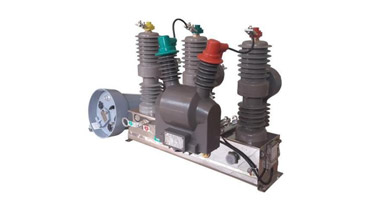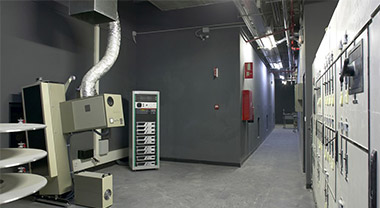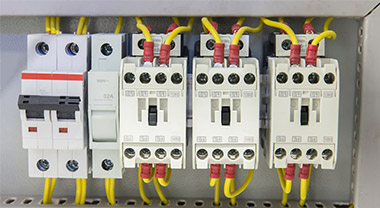Use and classification of low-voltage circuit breakers
Low-voltage circuit breakers are commonly known as automatic air switches. They are one of the main switching appliances in low-voltage distribution networks, and they are the most complete switch in low-voltage switches. It can be used to connect and break the normal load current, and has the function of automatically protecting the circuit. When a short circuit, overload, low voltage and other faults occur in the circuit, the low-voltage circuit breaker can automatically cut off the circuit. Low-voltage circuit breakers are widely used as master switches for low-voltage distribution transformers, control switches for large-load power lines and high-power motors. But its structure focuses on improving the arc extinguishing ability, so it is not suitable for circuits that require frequent operation. It can not only make and break the normal load current, motor working current and overload current, but also make and break the short-circuit current. It is mainly used as an electric ear switch in low-voltage distribution lines or switch cabinets (boxes) that are not operated by the family. It also protects lines, electrical equipment and motors. When they are subjected to severe overcurrent, overload, short circuit, and interruption When there are faults such as phase and power failure. Can automatically cut off the line. Play a protective role.
There are many types of low-voltage circuit breakers. They are classified according to structure, arc extinguishing medium, purpose, number of poles, and operation mode.
1. According to the structure, there are universal type (also known as frame type), niu material shell type, small prison chess number type.
2. According to the arc extinguishing medium, there are air circuit breakers and vacuum circuit breakers.
3. Classified by purpose. There are circuit breakers for power distribution, circuit breakers for motor protection, circuit breakers for lighting, and power distribution protection circuit breakers. See the table below for details:
| Breaker Type | type and scope of the current | protection characteristics | The main purpose | ||
| distribution line protection | AC 200-400A | selective class B | Sec protected | short transient delay | power switch and the power supply terminal of the switch branch near |
| three sections protection | momentary lapse short delay | ||||
| A class of non-selective | Current limiting | longInstantaneous delay | and the leg proximal end arm switching switch | ||
| General type | |||||
| DC 600-6000A | rapid type | polar, non-polar | is protected thyristor device | ||
| general type | long delay, instantaneous | Usually protected DC device | |||
| motor protection | AC 60-600A | directly start | general type | instantaneous overcurrent release multiple (8-15) In | protection cage motor |
| current limiting | instantaneous overcurrent release multiple 12In | protection cage motor, also mounted on the end close to the transformer | |||
| indirect start | instantaneous overcurrent release multiple (3-8) In | and protection cage winding type motor | |||
| and the lighting protection conductor | AC 5-50A | overload long delay, instantaneous short circuit | monopole, except for the illumination, the life can still be used within buildings and signal secondary circuit of electrical equipment | ||
| leakage protection | AC 20-200A | 15mA, 30mA, 50mA, 75mA, 100mA, 0.1s breaking the | to ensure personal safety, to prevent leakage fire | ||
| special purpose | AC or DC | Usually only momentary action | The excitation switch, etc. | ||
It can be seen from the table that low-voltage circuit breakers for power distribution are classified according to their protection performance, including non-selective (A type) and selective Sheng (B type). Non-selectable circuit breakers are generally instantaneous action and only used for short-circuit protection; some are long-delay action and only used for overload protection. Select the whole circuit breaker, there are two-stage protection, three-stage protection and intelligent protection. The two-stage protection has two stages of time absorption or short delay. The three-stage protection has three characteristics of instantaneous, short delay and long delay. Among them, inkstone time and short time delay characteristics are suitable for short circuit
Protection, and the long delay characteristic is suitable for overload protection.
4. According to the number of poles of the main circuit, there are single-pole, two-pole, three-pole, and four-pole circuit breakers. The miniature circuit breaker can also be assembled into a multi-pole circuit breaker.
5. According to the types of protection trips. There are short-circuit instantaneous tripping devices, short-circuit short-delay tripping circuits, over-level long-delay inverse-time protection tripping devices, under-voltage instantaneous trips, and under-voltage delay trips. Deduction, eye protection release, etc. The trip unit is an integral part of the circuit breaker. According to different purposes, the circuit breaker can be equipped with different trip units. The above types of trip units can be individually or combined into non-selective or selective protection circuit breakers in the circuit breaker. The intelligent protection. The tripping meal is controlled by Huiji, with more protection functions and better selectivity. This kind of open circuit is called an intelligent circuit breaker.
6. According to the operation mode, it is divided into manual operation, electric operation and energy storage operation.
7. According to whether it has current limiting performance, there are general a non-current limiting and fast current limiting circuit breakers.
8. According to the installation method, it can be divided into fixed type, beating type and drawing type.
9. According to performance, low-voltage circuit breakers can be divided into two types: ordinary type and current-limiting type. Current-limiting circuit breakers generally have a contact system with a special structure. When the short-circuit current passes, the contacts are repelled under the action of electric power to present an arc in advance. The electromagnetic force generated by the arc is less than the tension of the reaction force spring, and the armature cannot be The solenoid is attracted and the circuit breaker operates normally. When a short circuit fault occurs in the line, the current exceeds several times the normal current, the electromagnetic force generated by the electromagnet is greater than the force of the reaction force spring, and the armature is attracted by the electromagnet and the free trip mechanism is pushed through the transmission mechanism to release the main contact. The main contact is separated and cut off the circuit under the action of the opening spring to play a short-circuit protection function.




